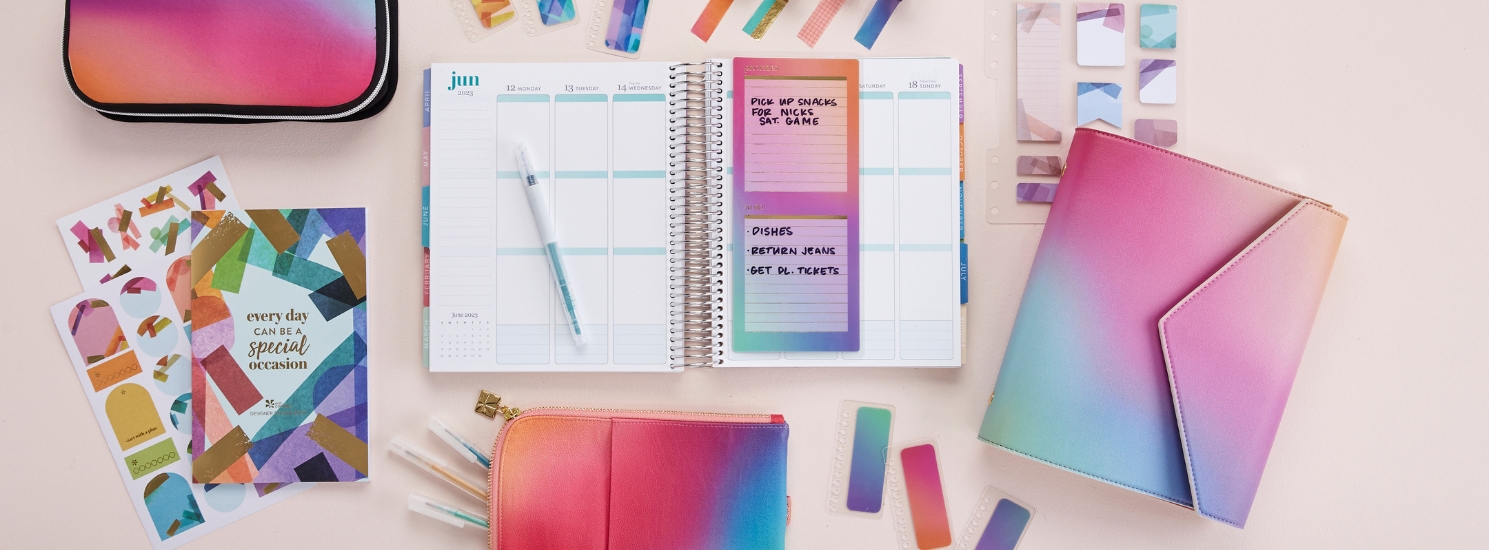Chances are, your summer is brimming with many responsibilities and (hopefully!) some fun. Somewhere between the beach read you’ve wanted to devour for the last three months, spending time with family, your summer side hustle, and that home improvement project you’ve been meaning to tackle, you also have planning for the upcoming school year on your to-do list.
It’s a lot, and it can feel overwhelming. It’s tempting to forget all about the approaching school year until a week before it starts. But that’s a recipe for disaster. So here are a few ways to have a great summer while getting a jump-start on fall.
1. Schedule work time
Using a paper planner or your digital calendar, create an intentional structure for the time you’re working on next year’s curriculum. Maybe you’ll block the first two weeks of the summer and get everything done at once. Perhaps it works better for you to spend two hours each Monday morning working toward your goals. Or maybe you have another plan that works for you and your unique situation. By giving yourself defined times that you’ll work, you’ll protect and give yourself the very deserved and necessary break you need.
2. Make it enjoyable
No matter how you feel about planning for next year, spend some time making your situation pleasant. Tidy your workspace, wear comfy clothes, treat yourself to a snack, turn on some tunes, or head to a coffee shop or library for a change of scenery. A small shift in your environment or perspective can make a big difference in your motivation level.

Thrive Market
Free Membership for Teachers
3. Use your resources
You don’t have to reinvent the wheel, nor do you have to do everything alone. Consider these ideas for optimizing your resources while you work on next year:
- Cannibalize your prior work. It’s time to dig through old files. How can you modify and borrow from past years? Think broadly about this, too— you might have resources you created from continuing education classes or other educational pursuits that could come in handy now.
- Work with a buddy. Depending on your situation, you might work with your department, team teachers, or pod and share planning responsibilities.
- Get some outside help. There are many apps and websites offering lesson plans, worksheets, projects, and other materials that can help ease your workload and give you great ideas for your classroom. Start with Teachers Pay Teachers, PBS LearningMedia, and National Geographic.
4. Backward plan
More than likely, you already backward plan your curriculum and lesson plans. But do you backward plan how you’re going to spend your summer? Budget your time according to what you need to do so you’re completely ready for the first day of school. Break your big tasks into manageable pieces and create a calendar, noting how you’ll complete each smaller task. You’re less likely to waste time if you have a targeted list of to-dos. And that means more time for whatever you love during the summer!
Related: 10 Hot Summer Discounts for Teachers
5. Take a break
For many teachers, the school year is busy and stressful. (And, let’s be honest, for many teachers, the summer can be nearly as busy and stressful as the academic year.) For your physical, emotional, and mental health, it’s vital for you to take a break from the stressors of your career. Give yourself the time and space you need to enjoy things you love beyond teaching. You just might find that when you sit down to plan, you’ll feel more creative and ready to tackle the school year.

Huffy Bikes
25% Off for Teachers
6. Ask for help if you need it
The last few years have been extraordinarily challenging and stressful for educators. If you find yourself struggling as you think about next year, you’re not alone. There are mental health resources available to help. Start here:
- Members of the National Education Association can access 12 free months of the NEA Mental Health Program, a confidential app for mental health and wellness.
- Members of the American Federation of Teachers can access free trauma counseling, regardless of where they live.
- Your health insurance and benefits plan might offer the Employee Assistance Program. EAP offers a set number of free counseling sessions; when you schedule a session, make sure that your counselor accepts EAP from your insurance plan.
- Check your health insurance plan for counseling and therapy benefits. They might include face-to-face options, group therapy, therapy apps, or sessions via phone or video chat.

Joanna Guldin-Noll spent years teaching at a Baltimore high school, pioneering the school’s first AP English Language and Composition course, garnering thousands in grants for her students, and teaching American Literature, honors, and recovery courses. With a Master’s in Secondary English Education from Johns Hopkins, she was an adjunct faculty member and portfolio coach for the School of Education’s master’s program and served as a consultant for educational start-ups. She lives in Pennsylvania with her husband John and her puppy Albus.




